AMAZON multi-meters discounts AMAZON oscilloscope discounts
Goals:
- Understand the importance of safety and accident prevention in a power equipment engine shop environment
- Explain the basic principles of personal safety
- Explain the procedures and precautions for safety when using tools and equipment
- Explain what should be done to maintain a safe working area in a service shop environment
- Describe the purpose of the laws concerning hazardous wastes and materials, including right-to-know laws
INTRODUCTION
Most people are concerned with safety in and around their homes. They strive to protect their families from accidents and injuries. But accidents in the workplace are often more severe than accidents at home, because workplaces contain more potential hazards. Although working on power equipment engines can be fun and re warding, if proper precautions are not followed, it can be dangerous as well. You must prevent accidents by working safely, as there is great potential for serious accidents to occur in a power equipment engine repair shop.
THE SAFETY ATTITUDE
Safety is more than just the absence of accidents. Safety is an attitude that helps you prevent injuries to yourself and others. Safe working practices should be a way of life. They should be as instinctive as putting on your seat belt or looking both ways before you cross the street. Safety isn't a matter of good or bad luck. It's a predetermined set of mental exercises, including:
- Planning to work safely
- Recognizing potential safety hazards and eliminating them
- Following safety procedures at all times, especially at work
The Occupational Safety and Health Administration (OSHA) is the federal agency that publishes safety standards for business and industry. OSHA's regulations affect every business that has employees and sells its products or services. OSHA requires every employer to pro vide employees with safe workplaces that are free from recognized hazards. Without getting into a long discussion about the legal aspects of OSHA's regulations, suffice it to say that it's the federal government's law enforcer in industrial safety matters. Employers are motivated to adopt and use safe working procedures through OSHA's strict enforcement of the regulations. Safety violators receive harsh penalties and fines. You can find a complete list of OSHA's proven safety methods, practices, and regulations as well as information regarding minors in the workplace at osha.gov. Even if you're a one person operation, you should understand and follow OSHA's safety guidelines. In a power equipment engine service department, safety matters of primary concern are:
- Fire
- Chemicals
- Electricity
- Ventilation of exhaust gases
- Operation of engines and equipment
- Housekeeping practices
- Handling of heavy objects and materials
- Use of personal protective equipment
Now that you have a list of the safety topics and areas that OSHA's regulations cover, let's look at these important safety items one at a time.
FIRE SAFETY
A major safety consideration in the power equipment engine repair business is fire prevention. Many fires occur in private garages every year, and a significant number of these are started by the mishandling of gasoline, such as storing gasoline in unapproved containers or failing to clean up gasoline spills. Gasoline is the fuel for all modern power equipment engines. Because gasoline is one of the most flammable liquids, fire is a serious threat in any power equipment service area.
Gasoline isn't the only flammable liquid used in the service department. Oils, lubricants, paints, cleaning solvents, and other chemicals can create a fire hazard when improperly handled. Despite the fire risk, by following basic safety practices that we are about to discuss, the danger of fire can be greatly reduced, if not eliminated entirely.
The National Fire Protection Association (NFPA) is the largest and most influential national group dedicated to fire prevention and protection. Its mission is to safeguard people, property, and the environment from fires. The NFPA publishes the National Electrical Code (NEC), which is the national standard for all residential and industrial electrical installations in the United States and Canada. When you start planning a fire safety program, which is a policy to follow in case a fire occurs in the ser vice area or anywhere else in the store for your business, check with the NFPA. They can pro vide useful hints and detailed support information. The NFPA can be accessed at nfpa.org.
The Fire Triangle
There are three conditions that must be present for a fire to start. These conditions are grouped together to form the fire triangle. The three components of the fire triangle are:
- Fuel (such as wood or gasoline)
- Oxygen
- An ignition source (such as a spark)
After a fire starts, supply of fuel and oxygen must stay at certain levels to sustain the fire. To extinguish a fire, you must remove at least one of these two legs of the fire triangle. You can put out a fire by removing the fuel source or removing the oxygen.
When analyzing fire prevention, you must always be aware of the ignition sources that could start a fire in your work area. When we consider ignition sources, most of us think of open flames, sparks, stoves, and matches. How ever, there are several other dangerous, but less obvious, ignition sources.
For example, a common but often over looked source of ignition is the engine exhaust.
A power equipment engine's exhaust system becomes very hot during operation. This heat remains in the exhaust system for a period of time after the engine has been turned off. There fore, if an engine is still warm when you begin to make repairs, you must take extra precautions to prevent fires.
Another likely source of ignition is cigarette smoking. Smoking-related ignitions are a leading cause of fires. Sparks from lit cigarettes, heat from discarded cigarette butts, and the open flames of lighters and matches can all start fires in flammable and combustible materials. Therefore, smoking should be strictly controlled in a power equipment engine ser vice department. Smoking and nonsmoking areas should be posted with distinct, easily recognizable symbols. Smoking areas should be equipped with adequate receptacles to pro vide for the safe disposal of smoking materials.
Smoking is prohibited in many service departments, and smokers must go to a designated, outside smoking area.
Spontaneous combustion is another potential source of ignition that you should recognize.
In a fire caused by spontaneous combustion, the heat for ignition is created by a chemical reaction in combustible materials. One common type of spontaneous combustion occurs when oil--or solvent--soaked rags or papers are discarded in a trash can. The decomposition of the oil or sol vent often produces enough heat to ignite the rags or papers. To prevent spontaneous combustion, all oil- or solvent-contaminated rags and papers should be discarded only in designated, fireproof metal safety receptacles. Routine trash material shouldn't be discarded in these special receptacles.
The Four Fire Classes
Let's take a closer look at the different types of fires. The NFPA classifies fires into four categories or classes: Classes A, B, C, and D (FIG. 1). Each of these four fire classes is defined by, and associated with, a different type of fuel source.
Class A fires involve the burning of wood, paper, cardboard, fabric, and other similar fibrous materials. These materials ignite easily, burn rapidly, and produce large quantities of heat during burning. Some examples of Class A combustible materials that are commonly found in workplaces include:
- Paper business forms
- Company files or records
- Cleaning and polishing cloths
- Work aprons
- Dust covers
- Work area partitions
=============
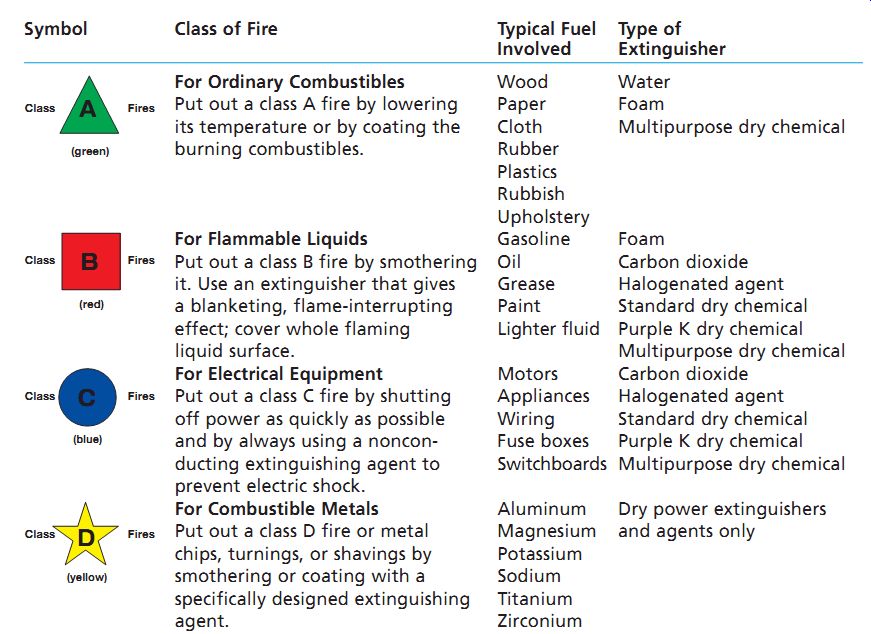
FIG. 1 The four categories of fires, per the National Fire Protection
Association (NFPA). The symbols shown are placed on fire extinguishers to indicate
the types of fires that they're designed to be used on.
===========
Class A fires can be extinguished with water, CO2 (carbon dioxide), or dry chemical agents.
These agents extinguish the fire by quickly cooling the burning material and lowering the temperature in the combustion zone. The symbol used to identify Class A extinguishing equipment is the letter "A" inside a green triangle.
Class B fires involve flammable liquids, gases, and other chemicals. Because many flammable and combustible liquids and solvents are used in a power equipment engine service department, special care should be given to their handling, use, and storage. Some common flammable liquids are gasoline, cleaning solvents, oils, greases, turpentine, oil-based paints, and lacquers. Common flammable gases include natural gas, pro pane, and acetylene.
Fires involving flammable liquids produce tremendous quantities of heat. Water is ineffective on a Class B fire. The heat from a burning flammable liquid will boil the water that's applied to the fire, turning the water into steam before it can do much good. Most importantly, almost all flammable liquids are lighter than water. The liquids float on top of the water and continue burning. This is a dangerous situation that can cause a flammable liquid fire to spread rapidly. The best way to extinguish a Class B fire is to smother it, removing its source of oxygen.
Foams, dry chemicals, and CO2 are the best extinguishing agents to use on a Class B fire. The symbol used to identify Class B extinguishing equipment is the letter "B" inside a red square.
If you routinely keep gasoline (even in small amounts) in your shop, you should have at least one Class B fire extinguisher in the area. You can smother a small Class B fire with a blanket or noncombustible container also. Use this method only if you can do so without risking personal injury. You should always remember that flammable liquid fires have a tendency to flare up rapidly.
Class C fires involve live electrical equipment, such as electrical boxes, panels, circuits, appliances, power tools, machine wiring, junction boxes, wall switches, and wall outlets. Some form of a short circuit or an overloaded circuit usually causes electrical fires. Examples of these causes include:
Loose contacts or terminals
Frayed wire insulation Improper installations
Defective equipment
Overloaded circuits
Electrical system overloads and short circuits can produce arcs, sparks, and heat. This type of electrical problem can ignite nearby combustible materials, such as wire insulation, plastic components, and wall insulation or paneling.
Water is a good conductor of electricity, and if it's applied to an electrical fire, the person holding the extinguisher could be severely shocked or electrocuted. Carbon dioxide (CO2) is the most widely used extinguishing agent because it's nonconductive, it penetrates around electric equipment well, it's effective, and it leaves no residue that would have to be cleaned up after ward. Dry chemicals produce a residue that can damage electric equipment.
Halon is another extinguishing agent that's effective on all classes of fire, especially Class C. Halon is stored as a liquid under high pressure and is released on a fire as an oxygen-depleting (smothering) gas. Although halon is effective, it's not readily available. Halon is a fluorocarbon compound that's classified as an ozone-depleting substance. Use of halon is restricted by law for environmental reasons. The symbol used to identify Class C extinguishing equipment is the letter "C" inside a blue circle.
Class D fires involve combustible metals, such as magnesium, titanium, zirconium, sodium, lithium, and potassium. Flakes and fine particles of these metals can be ignited at relatively low temperatures. Metal particles are of ten produced by cutting or grinding operations.
If cutting or grinding is done in a typical power equipment engine repair shop, it's usually con fined to a designated area that's uncluttered and well ventilated. Greater exposure to Class D fires is found in a "back-of-the-garage" type of operation, where space is limited and conditions might favor the start of this type of fire.
Dry powder compounds and dry chemical extinguishers are the two primary methods to extinguish Class D fires. Dry powder compounds are completely different from dry chemical extinguishers. Dry powder compounds are usually scooped directly onto a fire. Dry chemical extinguishers apply the dry chemical charge under pressure. The symbol used to identify Class D extinguishing equipment is the letter "D" inside a yellow star. The most important reason for introducing you to the four classes of fires is to inform you of what to do and what not to do in a fire emergency. Your reaction to a fire could mean the difference between a minor incident and major loss of property with possible injury or death. Knowledge of the fire classes is also important when you're assessing your work area for fire hazards. Fire prevention isn't just a slogan. Most fires are preventable. Awareness, common sense, and good work habits go a long way toward preventing fires.
Based on the nature of your work environment, the two types of fires most likely to occur in a power equipment engine service department are Class A and Class B fires. But don't be negligent about the possibility of a Class C or Class D fire occurring. Know what to do for all types of fires.
The most common type of fire extinguisher is an ABC dry chemical fire extinguisher, which is capable of handling A, B, or C type fires.
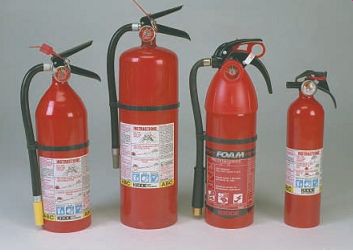
FIG. 2 Examples of different types and sizes of fire extinguishers.
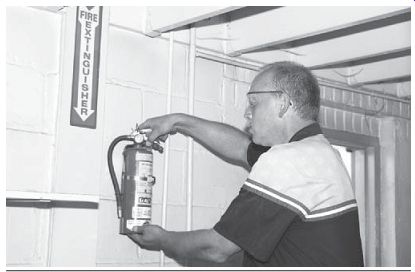
FIG. 3 Be sure to know the locations and types of fire extinguishers available
in your service shop.
Using a Fire Extinguisher
Fire extinguishers (FIG. 2) must be properly used to be effective on a fire. You should be familiar with the various extinguishers installed at your facility before a fire starts. This familiarization step is important for the following reasons:
To operate a fire extinguisher safely and efficiently, you should know how to use it. You'll lose valuable fire-fighting time if you have to stop and read instructions. Be prepared.
You could injure yourself or others by using an extinguisher improperly.
An average fire extinguisher discharges all its contents in just 12-60 seconds. You need to be well prepared in using an extinguisher to make best use of its contents.
To be effective, portable fire extinguishers must be readily available in a fire emergency. Extinguishers must be installed close to all potential fire hazards (FIG. 3). The extinguishers must contain the proper type of extinguishing agent for those hazards and they must be large enough to protect the designated area. The fire hazards existing in a shop must be identified and evaluated to verify that the proper numbers and types of fire extinguishers are installed at the correct locations.
Take the following steps before you attempt to extinguish any fire:
1. Evaluate the size of the fire. A fire in its beginning stages is called an incipient fire. A fire is classified as incipient (start-up) if it covers an area no larger than 2-4 square feet, has flames less than 2 feet in height, and produces low levels of smoke. Fire extinguishers can be effective for extinguishing or suppressing a fire at this stage. But it's not safe to use a fire extinguisher after a fire passes beyond the incipient stage. A fire usually remains in the incipient stage only for a short period of time. If the fire goes beyond the start-up stage, the only course of action is to evacuate the building or facility and call the fire department.
2. Locate the exits and the escape routes you'll need in an emergency evacuation. To prevent yourself from becoming trapped in a serious situation, keep the locations of the exits in mind as you fight the fire.
3. Determine which way the flames are moving and approach the fire from the opposite direction. The flaming side of the fire radiates too much heat, and the fire could overtake you before you have a chance to escape. By at tacking the fire from the opposite side, you'll be safer and able to get closer to the combustion zone of the fire.
When you've taken these preliminary steps, you're ready to use an extinguisher. To operate an extinguisher:
Remove the extinguisher from the wall.
Grasp the handle of the extinguisher and pull out the safety pin.
Free the hose and aim the nozzle at the fire.
Squeeze the handle.
Move the nozzle in a sweeping motion to distribute the extinguishing agent.
Here's a small hint. You can use the acronym PASS to help you remember how to operate a fire extinguisher. The letters in PASS stand for pull (the safety pin), aim, squeeze, and sweep.
Always direct the stream of extinguishing agent at the base of the flames. This is the fire's combustion zone. Cooling this area will extinguish the fire more quickly. Sweep the stream from side to side and work your way around the fire until it's completely extinguished. You should remember never turn your back on a fire until you're absolutely sure that it's completely extinguished. Heat remaining inside partially burned materials can reignite the fire when you're not looking. This could trap you. Portable fire extinguishers should be given a complete annual maintenance check, which may include recharging or pressure testing the extinguisher. Most fire extinguishers require pressure testing every 5 years.
You should also inspect all fire extinguishers at least once monthly and answer the following:
Is the extinguisher in its designated place, close to possible fire hazards? Is the extinguisher clearly visible? Is access to the extinguisher free of all obstructions? Is the extinguisher fully charged?
It's also a good idea (in some localities, it's the law) to install battery-operated smoke detectors and carbon monoxide detectors to cover the entire workplace. Remember, smoke detectors also require maintenance. Check the detectors and their batteries routinely to ensure that they're in proper working order. Replace batteries yearly, and replace all detectors that show signs of malfunction or incorrect operation.
The following are some important fire evacuation procedures that you should commit to memory. Never take fire safety lightly. It's recommended that you practice these procedures in scheduled exercises or fire drills.
Get out fast.
Believe the alarm when you hear it. Don't waste time trying to verify that there's a fire or trying to gather things before you leave.
Stay low to the floor to avoid smoke and toxic gases. The clearest air is found near the floor. So crawl if necessary! Cover your mouth and nose with a damp cloth, if available, to help you breathe.
Don't open a closed door without feeling the door's surface first. If you open a door with flames on the other side, the fire could back draft and severely burn you. Use the back of your hand (don't burn your palm) when you test for heat. If the door feels warm on your side, the temperature is probably far above the safety level on the other side. Don't open the door; use an alternate escape route.
Never enter a burning building. This could be a fatal mistake. Professional firefighters are equipped with special protective equipment and breathing devices that allow them to enter burning buildings. They're also trained in search-and-rescue techniques. Leave these tasks to them.
If your clothing catches fire, don't panic. Stop, drop to the ground, and roll around to smother the flames. If a coworker's clothing catches fire, quickly wrap the person in a blanket or rug to smother the flames. Assist the person with the stop, drop, and roll maneuver if a rug or blanket isn't handy.
HAZARDOUS CHEMICALS
Let's start with a question: Do you work with or near any hazardous chemicals? Before you answer too quickly, continue reading.
Many people are unaware that many materials and products in their work areas indeed comprise hazardous chemicals. Materials such as paints, oils, lubricants, cleaners, degreasers, solvents, and gasoline all comprise potentially hazardous chemicals. Labels on chemical containers normally list the names of the chemicals and any hazards associated with them. The labels also highlight health hazards that the chemicals present, including eye and skin contact irritation, breathing and inhalation dangers, and accidental swallowing or ingestion. Many labels also include first aid procedures in case of accidents attributable to these hazards, the name and address of the chemical manufacturer or importer, and specific ingredients of the hazardous chemical compounds. Some chemicals can cause a variety of serious health problems (or even death) if you're exposed to them.
For example, some chemicals can produce gases and vapors that are poisonous when in haled. Other chemicals are highly flammable or explosive when exposed to sparks or open flames. And still other chemicals can cause temporary or permanent blindness if they get splashed on the eyes. Everyone should take the potential hazards of chemicals seriously. The in tent here isn't to scare you. It's to alert you to possible dangers so that you'll give chemicals the attention they deserve.
Most chemicals in the typical power equipment engine shop workplace are not life threatening but can cause minor injuries or illnesses.
If you work with chemicals in your service department, always follow the safety precautions on the chemical's label and protect yourself with gloves and safety goggles. A common problem that chemicals can cause is a skin inflammation called contact dermatitis or eczema. Contact dermatitis usually starts as redness in the area of chemical contact or exposure and may progress to blistering, scaling, and cracking of the skin surface. People who regularly expose their hands to materials such as detergents, cleaners, degreasers, oil, and gasoline are susceptible to dermatitis. Although contact dermatitis isn't a life-threatening condition, it's uncomfortable and could lead to more serious health complications, such as infections. Contact dermatitis is much easier to prevent than it is to cure, so it's important to wear industrial rubber gloves whenever you're using chemicals that could come in contact with your skin. Exposing the skin to stronger chemicals can cause more serious injuries. For example, exposure to acids and strong bases can cause immediate and painful burns.
The batteries used in all types of power equipment contain strong and dangerous acids.
The sulfuric acid found in batteries is a particularly dangerous acid you should be aware of. It can eat through clothing or burn your skin. And more importantly, it can easily cause blindness if splashed on the eyes. Be aware that storage batteries give off dangerously explosive hydrogen gas when they're being charged. Always use extreme caution when handling, storing, re placing, charging, or adding distilled water to storage batteries. Follow these safety guidelines when handling batteries:
Keep batteries upright to prevent the acid from spilling or leaking.
Always wear gloves, an apron, and safety goggles when handling batteries, to protect your skin and eyes.
Charge batteries in a well-ventilated location to prevent the buildup of hydrogen gas.
Right-to-Know Laws
An important part of a safe work environment is knowledge of potential hazards.
Right-to-know laws protect every employee in a power equipment engine dealership. These laws were placed in effect when OSHA's Hazard Communication Standard was published back in 1983. This was originally intended for chemical companies and manufacturers who require employees to handle potentially hazardous materials in the workplace. Since then, most states have enacted their own right to-know laws and these laws now apply to all companies that use or sell potentially hazardous chemicals or materials. The general intent of right-to-know laws is to ensure that employers provide a safe working place for their employees when hazardous materials are involved. Specifically, there are three areas of employer responsibility.
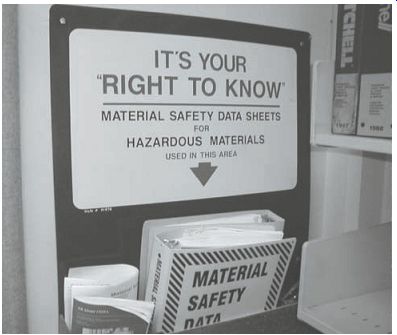
FIG. 4 Right-to-know laws were created to protect employees' rights and
give them access to all information regarding potentially hazardous materials
in the workplace.
First and foremost, all employees must be trained about their rights under the legislation, the nature of the hazardous chemicals around them, and the contents of the labels on the chemicals. Second, all the information on each chemical must be posted in material safety data sheets (MSDSs) and must be easily accessible to every employee (FIG. 4). Third, the manufacturer must give these sheets (FIG. 5) to customers if requested to do so. The sheets detail the chemical composition and precautionary information for all products that can present a health or safety risk.
ELECTRICAL SAFETY
We take electricity so much for granted that we often lose sight of its potential to cause serious injury or death. The main hazards of electricity are electrical shocks and burns. Electric shocks and burns usually result from:
- Faulty power tools or equipment
- A disorderly and untidy work environment
- Human error (the misuse of an electrical device)
Even if you don't work with electrical equipment on a routine basis, you should be aware of how shocks can occur. Generally, you must be in contact with or in proximity to a conductor or a conductive surface. Conductors are generally metals that readily pass, or conduct, electricity. If you're in proximity to a conductor and you contact a source of electricity, the electricity can pass through your body to the conductive material and then to ground. In such a situation, your body acts like a switch, closing the electrical circuit. The sensation that you feel is an electric shock. The shock may range from mild to severe, depending on the circumstances and the source of the electricity. If you're lucky, you may experience only a brief unpleasant sensation. If you're unlucky, you could be seriously injured, or worse.
There are two types of electric power sources: alternating current (AC) and direct current (DC). AC flows in alternating cycles and is used to run lighting circuits and appliances in most house holds and workplaces. DC is continuous and steady and is found in batteries and battery powered electric systems, such as power equipment engine electrical systems.
Each type of electrical source has its own set of hazard characteristics. The AC found in the typical repair facility can be hazardous if the path of the shock run from one hand to the other. This puts your heart in line with the alternating current flow and can cause fibrillation (erratic, non-rhythmic heartbeat).
Always keep your work area clean and orderly to prevent electrical accidents. Keep floors clean and dry, because a wet or damp floor will make anyone standing on it more conductive to electricity. All portable electrical equipment (tools that have plugs and cords) should be inspected before each use to ensure that the equipment, cord, and plug are in good condition. If you feel the slightest tingle or shock while using electrical equipment, stop immediately. That slight tingle is an indication that there's a fault in the equipment's electrical wiring or ground circuit. When unplugging any electrical power tool, don't pull the cord but instead pull the plug itself, to eliminate any possible problems in the plug.
Avoid wearing conductive metals such as rings, watches, and chains when working with electricity. These metal objects significantly in crease your risk of being electrically shocked.
You can increase your resistance to electric shock by wearing rubber gloves, standing on an insulating rubber mat, and using tools with insulated handles.
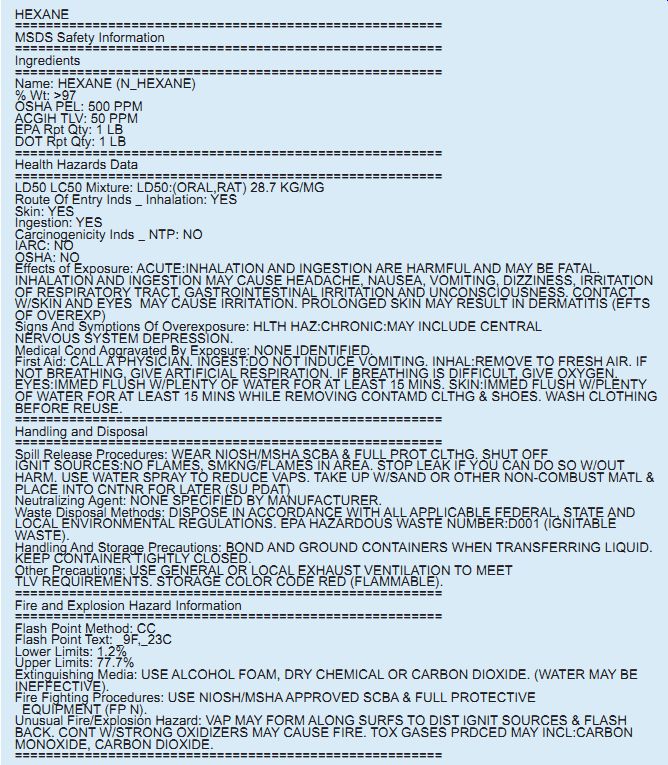
FIG. 5 Material safety data sheets (MSDSs) are an important part of working
in a power equipment dealership and should be readily available. They contain
important information to let you know the dangers of working with hazardous
materials.
EXHAUST GAS SAFETY
When an engine is running, exhaust gases are created that are hazardous if inhaled. The most dangerous of these gases is carbon monoxide (CO). Carbon monoxide is a by-product of burning hydrocarbon fuels. It's often present in garages and around heating equipment. It's colorless, odorless, and tasteless, so you can't detect when it's present. When inhaled, carbon monoxide passes into the bloodstream and pre vents red blood cells from carrying oxygen. As a result, the body suffocates from the lack of oxygen to the brain. Even small amounts of car bon monoxide can make you very ill. Adequate ventilation is necessary to prevent the buildup of carbon monoxide fumes. Also, carbon monoxide detectors should be installed in your work area. These devices are similar in appearance to smoke detectors and can be purchased at most hardware or discount stores. These detectors sound an alarm when a predetermined level of carbon monoxide is sensed in the air. They don't detect smoke and can't be substituted for smoke detectors. Each type of device has its own function. Always follow these precautions when operating an engine:
Never operate an engine in an enclosed area.
Make sure your workshop has proper ventilation.
Use exhaust pipe extensions to direct the exhaust gases outside.
OSHA can pro vide detailed information about ventilation safety requirements for buildings and work areas. You can find information on OSHA at osha.gov
When you're operating an engine (even if your shop is well ventilated), avoid breathing the fumes.
Never operate an engine too close to a residential building. Exhaust gases could seep in and jeopardize the well-being of those inside.
Don't pour gasoline into a hot or running engine.
SAFE OPERATION OF EQUIPMENT
All power equipment engines have moving parts that can be potentially hazardous. The careless operation of these vehicles when they're in for service can cause serious injuries and damage your workshop and your tools. To avoid accidents, follow these safety guidelines:
Read the manufacturer's instruction manual carefully before operating any unfamiliar equipment.
Never start a vehicle unless the transmission has been shifted into neutral or is in the "park" position.
Turn off the ignition system before you start working, to prevent the engine from starting accidentally while you're working on it.
Keep your hands, fingers, and sleeves clear of all hazardous moving parts.
Keep visitors and customers (especially children) away from all risk areas and post appropriate signs to warn customers of hazards.
Remember that the exhaust system gets very hot during operation. Keep your hands, feet, and loose clothing away from the exhaust components whenever the exhaust system is hot.
Allow the exhaust to cool before adding fuel to the engine.
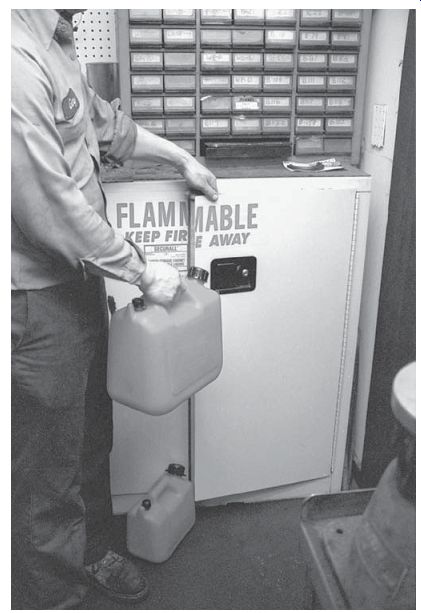
FIG. 6 Always store flammable liquids in a cool, dry area away from ignition
sources.
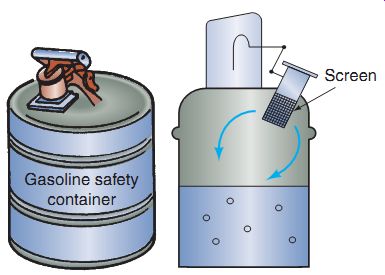
FIG. 7 Flammable liquids should be stored in safety-approved containers.
This gasoline container prevents the fumes from escaping while in storage.
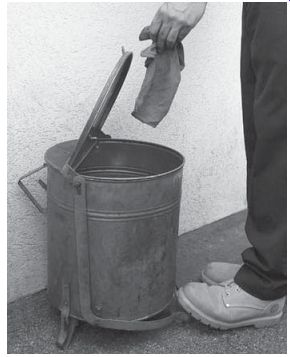
FIG. 8 Place oil rags and other combustible waste in an approved container.
GOOD HOUSEKEEPING PRACTICES
Now that we've discussed some of the hazards that may be present in a power equipment engine service department, let's look at some of the things that can be done to prevent accidents.
One of the most important considerations of any accident prevention and safety program is good housekeeping. Good housekeeping is more than just cleaning up. Housekeeping is a reflection of your organization and your work habits. A neat, well-organized work area allows for good inventory control of parts and materials. A tidy work environment provides the basis for proper waste disposal. Your neatness can prevent parts, tools, work records, and other important items from being lost in the clutter and thrown out with the trash. Finally, a neat work area is less likely to contribute to accidents. Here are some specific rules related to good housekeeping:
Keep your workbenches and your work areas clean and organized at all times. You should clean your work area daily, preferably after each job is completed. If a job spans several days, clean up at the end of each day. Don't allow combustible debris such as paper, card board, string, or rags to accumulate on or under the bench. If you must use combustible materials or flammable liquids, use only the quantity needed to complete the task and immediately return the remainder to its proper storage area. Clean up any spilled materials from floors and benches immediately. Sweep the floors every day to eliminate the buildup of dirt, dust, and other litter.
Store flammable liquids such as gasoline and solvents in approved safety cabinets and in cool, dry areas away from ignition sources (FIG. 6). Avoid storing flammable liquids or other chemicals in direct sunlight, heat, or humidity. Ensure that the storage area is well ventilated, to prevent the buildup of potentially explosive fumes. Check all storage areas frequently for rusted containers, corroded caps or lids, and leaking containers.
Label all flammable liquids and other hazardous materials properly. It should be noted that many chemicals should never be stored in anything other than the original container that they come in. If a substance is transferred from its original container, the second container must also be properly labeled. Use portable safety cans for transporting small quantities of flammable liquids (FIG. 7). These cans are fire resistant and have self closing lids. Never leave cans of flammable liquids lying around when they're not in use.
Small amounts of flammable liquids sometimes leak or spill from machines and equipment. Place drip pans under leaking engines and vehicles to prevent the floor from becoming slippery. Drip pans should be non combustible and should be large enough to contain any anticipated spill. If a vehicle has a persistent leak, place an absorbent, non combustible material in the pan to soak up the liquid. Empty the drip pans regularly and dispose of the oil-soaked compounds. Oil soaked materials are hazardous waste that must be disposed of properly. Don't include hazardous waste with normal trash.
Proper garbage disposal (FIG. 8) is another important concern for power equipment engine service departments.
Discard dry combustibles on a regular basis and never allow them to accumulate. Place combustibles in metal containers with lids.
Lids help to contain and snuff out any fire that might start inside the containers. When you empty the smaller containers, store the accumulated waste in a large metal refuse bin with a lid. These refuse bins should be located in a remote area away from heat sources.
It's a good housekeeping practice to separate clean combustible wastes from dirty combustible wastes. Examples of "dirty" combustibles include papers, rags, and work clothes that are soaked with oil, grease, or solvents.
These contaminated materials are more flammable than clean materials. Place all contaminated materials in separate metal containers with tight-fitting lids. Do you remember our discussion about spontaneous combustion earlier? This is a good example of the use of a special discard container for disposing of contaminated material. Have oily rags and work clothes laundered by a professional industrial cleaning service. Used liquids contaminated with dirt, grease, oils, solvents, or degreasers are classified as hazardous wastes and must be disposed of accordingly. Never empty such liquids into a sink or dump them on the ground. Federal, state, and local laws regulate the handling and disposal of hazardous wastes. Always follow authorized procedures when disposing of waste liquids.
HANDLING HEAVY OBJECTS AND MATERIALS
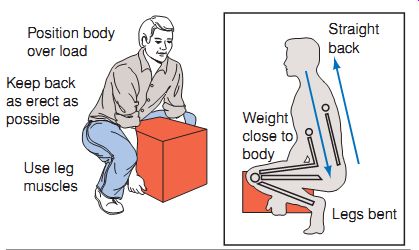
FIG. 9 Always lift heavy loads using your leg muscles rather than your
back muscles, and get close to the object to make lifting easier.
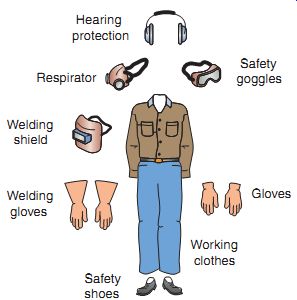
FIG. 10 Always wear appropriate personal protective equipment when working
in a shop environment.
Material handling (moving materials from one place to another) is a concern for all occupations because this task has serious hazards associated with it. Every workplace requires some form of material handling. In a power equipment engine service department, you may be required to remove or lift complete engine assemblies, pack ages of supplies, or pieces of equipment. Poor material-handling techniques and practices can lead to a variety of injuries, including back injuries, twisted or sprained muscles and joints, hand injuries, and foot injuries. Improper material handling procedures can also result in damaged equipment, tools, and facilities. Because they happen so frequently, back injuries are the costliest of all injuries in terms of medical costs and lost work time. Back injuries are often the result of poor material handling and improper lifting.
Most back injuries occur when workers don't know (or ignore) proper lifting techniques. Back injuries can also result from preexisting back problems that are worsened by lifting. Some workers know how to lift heavy items correctly but ignore proper techniques to get the job done faster. To prevent injuries, always use the following lifting techniques (FIG. 9):
Be sure that the weight of the load isn't beyond your capacity to lift. Usually, loads of more than 50 pounds require the assistance of a second person.
Ensure that the path of travel from pickup to drop-off is clear of obstacles.
Get a good grip on the item to be lifted. If needed, wear gloves to improve your grip.
Stand close to the load you're going to lift.
Bend from the knees (squat) when lifting and setting down a load. Bending from the waist places more strain on the lower back.
Lift with a smooth, controlled motion.
Don't twist from the waist to place the load after lifting it. Instead, turn your entire body to set a load in place.
Use caution when placing a load above chest height or below knee height. You put more strain on the lower back in these positions.
Here are some other suggestions to prevent back injury when lifting materials:
Use hoists, hand trucks, carts, or dollies to lift or move heavy items. These lifting devices free you from heavy lifting and protect you from injury.
Wear a back support belt to protect the back muscles.
Always get help to move loads that are heavy or awkward in size or shape.
Stretch your back and arm muscles before lifting. Stretching warms up the muscles and helps prevent muscle strains, pulls, and tears.
Keep your back and stomach muscles in good shape. Lack of good muscle tone could contribute to a severe lifting-related injury.
USING PERSONAL PROTEC TIVE EQUIPMENT
To protect yourself from injuries in the work place, use personal protective equipment (PPE) when appropriate. PPE includes items such as dust masks, safety glasses, gloves, and special footwear (FIG. 10). Remember that any task can be hazardous, even if the equipment is operated properly and all safety procedures are followed. Always wear personal protective equipment wherever the potential for injury exists. The type of PPE you need varies depending on the tasks you perform.
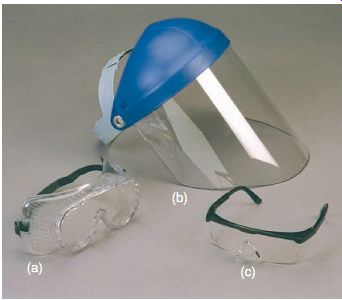
FIG. 11 These eye protectors have specific uses (see text): (a) splash
goggles, (b) face shield, and (c) safety glasses.
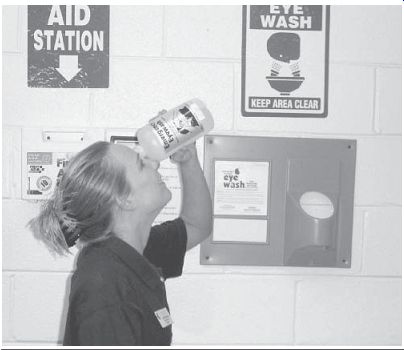
FIG. 12 Eyewash stations are available in properly equipped power equipment
service shops. If you need to use an eyewash station, you should follow up
with a visit to a doctor to ensure no permanent damage to the eyes has occurred.
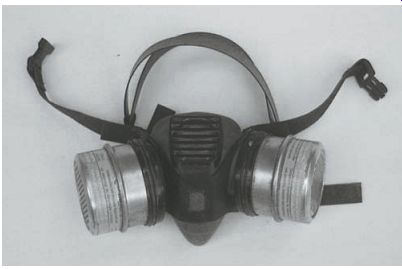
FIG. 13 Whenever there is a danger of breathing harmful fumes, use a high-quality
respiratory breathing protector.
Protecting Your Eyes and Face
Protective safety glasses and goggles (FIG. 11) are available in a wide variety of styles to meet specific needs. Safety glasses with side shields provide more protection from impact and flying particles. Most safety glasses and goggles may be worn alone or over a worker's own prescription eyeglasses.
Splash goggles protect the eyes from dust particles and chemicals. They may contain ventilation holes to provide air circulation. Welding glasses have tinted or darkened lenses to protect the eyes from the bright flashes of welding arcs.
A face shield is a cap-like device that holds a clear plastic shield over the face. The face shield protects the entire face from chemical splashes and flying particles.
Many people wear contact lenses as a replacement for glasses. Contact lens wearers must determine when it's appropriate for them to wear their contacts on the basis of their working environment. Wearing contact lenses aren't recommended if the workplace has significant amounts of flying dirt or dust particles, when welding, or if chemical fumes are present. Remember that the only function of contact lenses is to correct your vision. They don't provide any eye protection from dust, impact, or splashes.
You must still wear eye protection devices such as goggles or face shields over your eyes when ever your activity warrants such protection.
Sometimes, even with the best safety practices, people somehow get foreign objects in their eyes. Many shops have eyewash stations or safety showers (FIG. 12), which should be used whenever you have been sprayed or splashed with a chemical such as battery acid, fuel, or cleaning solvent. Contact a doctor and get immediate medical attention.
Protecting Your Lungs
Respiratory protection devices can protect you from harmful dusts, gases, or vapors. Any employee with exposure to chemical fumes, dust, or any other irritants in the air should wear appropriate respiratory protection devices.
A typical dust mask is a small, fabric-like filter with straps that slip over the face to cover the nose and mouth. Dust masks are designed to shield the mouth and nose from dust particles. They don't filter out vapors, fumes, or gases.
Respirators (FIG. 13) are more substantial devices than masks. Firefighters use a form of respirator device when they're called upon to enter a burning building. Respirators are made of heavy plastic, metal, and safety glass. The respirator provides the best respiratory protection available.
Protecting Your Hearing
Question: How can you tell that you're in a high-noise area without using a sound-level meter? If another worker is standing 3 feet away and you can't have a conversation unless you shout, the work area is too noisy. Hearing protection should always be worn in areas with a high-noise level. If you work 8 hours a day in a high-noise environment without wearing hearing protection, you'll most likely experience a hearing loss over a period of years. If the noise level is extreme, you may suffer a hearing loss more quickly. You should always wear earplugs or a headset (FIG. 14) in noisy areas or when you're using tools that produce a lot of noise.
Remember, there's no cure for noise-induced hearing loss. The prevention of excessive expo sure to noise is the only way to avoid hearing dam age. Some earplugs are disposable (FIG. 15), meant to be used once and thrown away. Others are intended to be cleaned and used repeatedly.
A professional hearing specialist would individually fit preformed or molded plugs.
Proper Attire
When working in a shop, remove hooded sweatshirts, ties, bracelets, necklaces, watches, and other jewelry. They can be caught in drive systems or possibly cause electrical shock if placed across an electrical circuit. To maintain a professional appearance, many shops have uniforms for their employees to wear when at work. These uniforms include long pants and button up shirts. Never wear shorts while working in a service shop as there will be no protection for your legs from hot surfaces, such as an exhaust system.
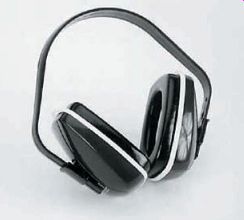
FIG. 14 Protect yourself from permanent hearing damage from excessive
noise by using high-quality headsets when you're working in high-noise areas.
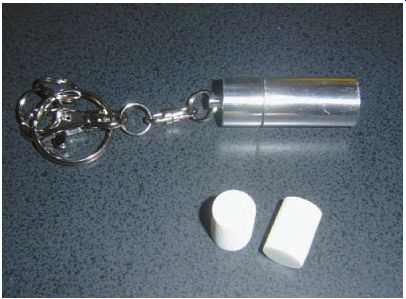
FIG. 15 A typical pair of disposable earplugs with a small storage container.
In a power equipment engine shop environment, these may be all that is needed
to help protect your hearing in most cases.
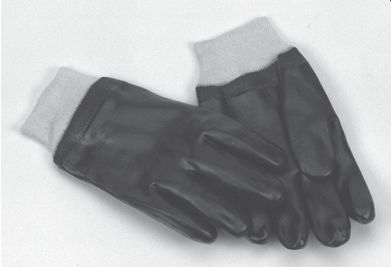
FIG. 16 Rubber gloves protect your hands when working with cleaning solvent.
Protecting Your Feet and Legs
Foot injuries represent another type of injury associated with material handling. These injuries usually occur when heavy materials or tools are dropped. To prevent foot injuries, it's a good idea to wear steel-toed safety shoes or boots. Various types of steel-toed safety shoes are available to provide different levels of protection. You can also attach metatarsal guards (special covers that go over the instep of boots) to your shoes to protect your feet. Open-toed shoes or sneakers are not considered appropriate footwear. Avoid wearing shorts and wear full length pants when working in the service area to protect your legs from injury.
Protecting Your Hands and Arms
Gloves, gauntlets, and sleeves protect the arms and hands from chemical splashes, heat, cuts, and tool-related injuries. In addition to standard leather and heavy-cotton construction, work gloves are also made from a variety of plastics and rubbers for use when working with solvents (FIG. 16). Special gloves may also be designed to resist tears, cuts, and punctures.
Gloves come in a variety of lengths to cover the hand, wrist, elbow, or entire arm, depending on the requirements of the job.
USING TOOLS SAFELY
According to the National Safety Council (NSC), more than 500,000 disabling, work related finger and hand injuries occurred in a recent 1-year period. The careless use of simple hand tools such as screwdrivers, wrenches, and hammers was found to be the cause of many of these injuries. The most common hand and finger injuries were impact injuries (bruises, sprains, broken bones), cuts, and puncture wounds caused by improper use of hand tools.
Here, improper use means using the wrong tool for the job, holding or using the tool incorrectly, or using a damaged tool.
Using Hand Tools Safely
Power equipment engine technicians use dozens of different hand tools daily. By giving your tools proper care, you'll extend their useful life and also lessen the possibility of accidents and injuries. To keep your tools in top working condition and prevent injuries to yourself and your fellow workers, observe the following safety precautions:
Always use the right tool for a job. Don't try to substitute one tool for another.
Inspect hand tools often for defects. If you find a defective tool, repair it or replace it.
When using a tool, comply with the manufacturer's instructions.
Never toss a tool to someone. Hand tools should be passed from one person to another by hand.
Keep all tools clean. Protect the tools from corrosion. Wipe them clean when you're finished using them. Lubricate all tools with moving parts to prevent wear and binding.
Store tools in a dry and secure location.
Keep the cutting edges on tools sharp. Sharp tools perform better and they save time.
Using Power Tools Safely
Power tools have certain additional hazards associated with them. Common power tools that are used by a power equipment engine technician include drills, power impact wrenches, and grinders. Electric power tools have three properties that contribute to their potential danger: electrical charge, high-speed movement, and momentum. The most important area of concern when using power tools is the electric charge. To avoid an electric shock when using an electric power tool, you must isolate and insulate yourself from the electric current by following these guidelines:
Make sure that all electric power tools are properly grounded.
Inspect electric power tools often for defective wiring.
Visually inspect all power cords, plugs, and receptacles.
Have qualified electricians replace all defective cords and plugs.
Always unplug tools before replacing bits, blades, or grinder wheels.
Never operate an electric power tool in a wet or damp area.
Wear gloves to protect yourself from shocks.
Use only extension cords that are rated to carry the current required by the power tool. An undersized extension cord can cause damage to the tool and can be a fire hazard if it overheats because of electrical overloads.
High-speed movement is another area of concern when operating electric and air power tools. Avoid contact with any rotating tool parts because they could grab your hands, hair, or clothing. Keep all safety guards in their proper positions when operating power tools such as grinders and drills. When drilling metal, remember that friction due to the high speed involved produces sharp, hot shavings that could cut or burn you. Also, note that if a drill becomes jammed in a piece of material, the momentum of its moving parts may cause it to spin out of control. To avoid being injured by a tool's momentum, remember the following guidelines.
Hold all tools firmly. Pay attention to any sounds that may indicate that a tool is about to jam.
Use only sharp cutting bits. A dull bit will frequently jam.
Clamp or block all workpieces tightly to a firm work surface. Don't use your hands to hold the materials in position.
Wear appropriate personal protective equipment when operating power tools.
Check tools for potential mechanical failure. For example, check for broken drill bits.
Also, check for faulty triggers and control switches that could cause unexpected start ups and stops. Make sure the tools have all their guards in place.
Compressed Air Safety
Virtually all service shops use compressed air to assist with the day-to-day activities within the shop environment. Air compressors can be useful, but it's important to use safety precautions when working with compressed air.
Never point a compressed air nozzle at another person.
Never use compressed air to clean off clothes.
Never use compressed air to rotate engine components such as bearings.
Air pressure can cause metal particles or even water droplets to penetrate skin.
Air pressure can be regulated with the use of an air pressure regulator.
Summary
It's important to understand the importance of safety and accident prevention in a power equipment engine shop environment.
You should know the basic principles of personal safety.
There are procedures and precautions for safety when using tools and equipment.
You must maintain a safe working area in a service shop environment.
There are laws concerning hazardous wastes and materials, including right-to-know laws.
You have rights as an employee (and/or student) to have a safe place to work.
QUIZ
1. The three elements of the fire triangle are ___, ___, and___ .
2. A Class B fire involves live electrical equipment. (True/False)
3. Name the federal agency that publishes and enforces safety standards for business and industry.
4. What are some of the key safety areas of primary concern in a power equipment engine service department? ,___ ,___ , ___, ___, ___, ___ ,___ , ___, and ___.
5. ___ is a type of fire created by a chemical reaction with combustible materials.
6. Safety is an ___ that helps you prevent injuries to yourself and others.
7. There are two types of electric power sources: ___and___.
8. The letters PASS are used as a fire safety acronym. They stand for (), ___ , ___, and ___.
9. To prevent foot injuries, it's a good idea to wear ___.
10. When an engine is running, it creates exhaust gases that are hazardous if inhaled.
The most dangerous of these gases is ___.